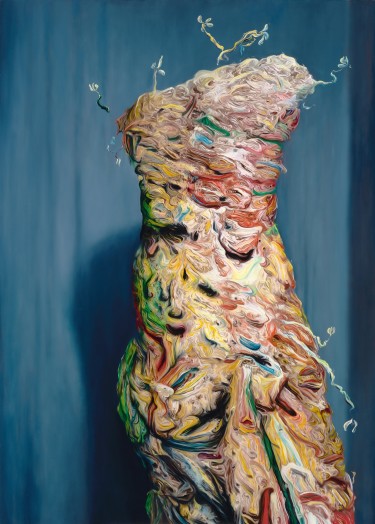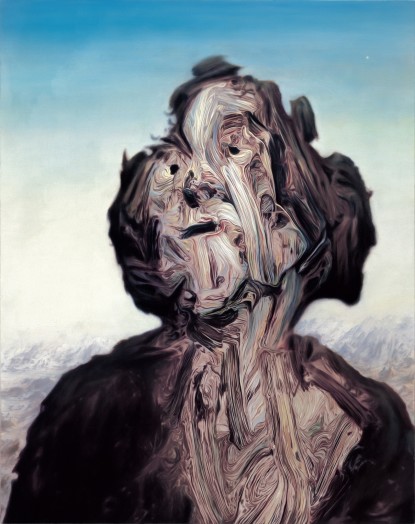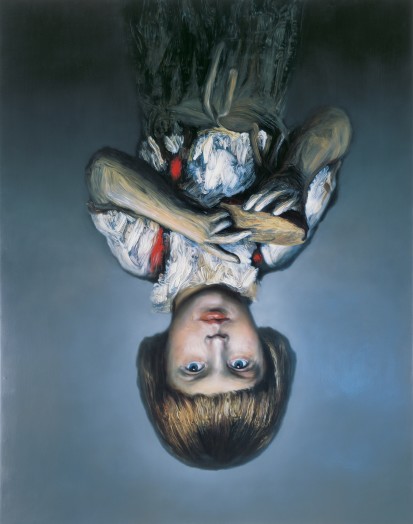The Eighth Gwangju Biennale: 10,000 Lives: Biennale Hall, Gwangju City Museum, Folk Museum Gwangju, South Korea
The exhibition’s title is borrowed from Maninbo (Ten Thousand Lives), the 30-volume epic poem by Korean author Ko Un, which was completed this year after nearly thirty years of work. Originally conceived during the two years Ko Un spent in solitary confinement as punishment for his participation in the 1980 South Korean Democracy Movement, Maninbo is a collection of over 4,000 poetic portraits chronicling every person Ko has ever met, including figures from history and literature.
Like Maninbo, the exhibition can be likened to a gallery of portraits. As it unfolds, the show proposes a series of case studies of our desire to create substitutes, effigies, and stand-ins of our loved ones and ourselves. This passion for images and image making is a basic human impulse: it is central to our understanding of ourselves and others, to the formation of our memories and dreams, and is a defining feature of art.
Humanity’s intense relationship with images also produces unruly emotions. We denounce images, smash them, and carry out wars in their name. It is with this in mind that the exhibition also attempts to plumb the darkest depths of representation, by collecting images that bear witness to lives cut brutally short, that act as tools of despotism and oppression, or that function as receptacles of historical trauma.
In addition to exploring the lives and histories that images contain, the exhibition also engages with the increasingly complex lives of images themselves. In a world now inundated with a seemingly endless stream of photographs and digital phantasms, where a picture can be transformed into an icon overnight, the exhibition attempts to understand how images have been transformed though recent social and technological upheavals.
LIST OF ARTISTS
Pawel Althamer; Carl Andre; Art Orienté Objet (Laval-Jeantet & Mangin); Anna Artaker; Tauba Auerbach; Morton Bartlett; Thomas Bayrle; Hans Bellmer; E.J. Bellocq; Nayland Blake; Jonathan Borofsky; Irina Botea; Kerstin Brätsch; Glenn Brown; James Lee Byars; Duncan Campbell; James Castle; Maurizio Cattelan; Jacques Charlier; Hyejeong Cho; Byungsoo Choi; Kwang-Ho Choi; Anne Collier; Roberto Cuoghi; Keren Cytter; John De Andrea; Berlinde De Bruyckere; Andre de Dienes; Philip-Lorca diCorcia; Mike Disfarmer; Harold Edgerton; Walker Evans; Eye Glass Shop; Harun Farocki; Jean Fautrier; Hans-Peter Feldmann; Fischli and Weiss; Lee Friedlander; Katharina Fritsch; Aurélien Froment; Paul Fusco; Cyprien Gaillard; Rupprecht Geiger; Franz Gertsch; Hermann Glöckner; Jean-Luc Godard; Gu Dexin; Guo Fengyi; João Maria Gusmão and Pedro Paiva Portugal; Yang-ah Ham; Duane Hanson; Ydessa Hendeles; Thomas Hirschhorn; Tom Holert; Arnoud Holleman; Carsten Höller; Roni Horn; Tehching Hsieh; Huang Yong Ping; Heungsoon Im; Sanja Ivekovic; Jikken Kobo/Experimental Workshop (Shozo Kitadai, Kiyoji Otsuji, Katsuhiro Yamaguchi); Yasmine Kabir; Kan Xuan; Bongkyu Kang; Jacob Kassay; Leandro Katz; Mike Kelley; Edward and Nancy Reddin Kienholz; Hanyong Kim; Sanggil Kim; Konrad Klapheck; Alice Kok; Kokdu Dolls from the collection of Ock Rang Kim; Jeff Koons; Tetsumi Kudo; Emma Kunz; Maria Lassnig; Mark Leckey; Jung Lee; Seung-taek Lee; Sherrie Levine; Namjin Lim; Herbert List; Liu Wei; Liu Zheng; Paul McCarthy; Gustav Metzger; John Miller; Rabih Mroué; Matt Mullican; Namhan Photo Studio; Bruce Nauman; Yoon Oh; Shinro Ohtake; Henrik Olesen; Overplus Project (Sun-ho Kang, Yong-jin Kim, Sung-wan Park, Da-un Jung); Taekyu Park; Eliot Porter; Seth Price; Thom Puckey; Bridget Riley; Peter Roehr; Dieter Roth; Ataru Sato; Karl Schenker; Jean-Frédéric Schnyder; Tino Sehgal; Paul Sharits; Cindy Sherman; Laurie Simmons; Hito Steyerl; Sturtevant; Paul Thek; Ryan Trecartin; Tuol Sleng Prison Photographs; Useful Photography; Franco Vaccari; Stan VanDerBeek; Danh Vo; Andy Warhol; Andro Wekua; Christopher Williams; Ming Wong; Wu Wenguang; Katsuhiro Yamaguchi; Haegue Yang; Ye Jinglu (photo album discovered by Tong Bingxue); Sergey Zarva; Zhang Enli; Zhao Shutong, Wang Guanyi and the Rent Collection Courtyard Collective; Zhou Xiahou; Jakub Julian Zółkowski; Artur Żmijewski
Artworks
-
 Glenn BrownSearched Hard for You and Your Special Ways, 1995Oil on canvas mounted on board89 x 75 cm (35 1/8 x 29 1/2 in)
Glenn BrownSearched Hard for You and Your Special Ways, 1995Oil on canvas mounted on board89 x 75 cm (35 1/8 x 29 1/2 in) -
 Glenn BrownChristina of Denmark, 2008Oil on panel165 x 119 cm
Glenn BrownChristina of Denmark, 2008Oil on panel165 x 119 cm -
 Glenn BrownLittle Death, 2000Oil on panel68 x 54 cm
Glenn BrownLittle Death, 2000Oil on panel68 x 54 cm -
 Glenn BrownAriane 5, 1997Oil on canvas mounted on board91 x 72 cm (35 7/8 x 28 3/8 in)
Glenn BrownAriane 5, 1997Oil on canvas mounted on board91 x 72 cm (35 7/8 x 28 3/8 in)